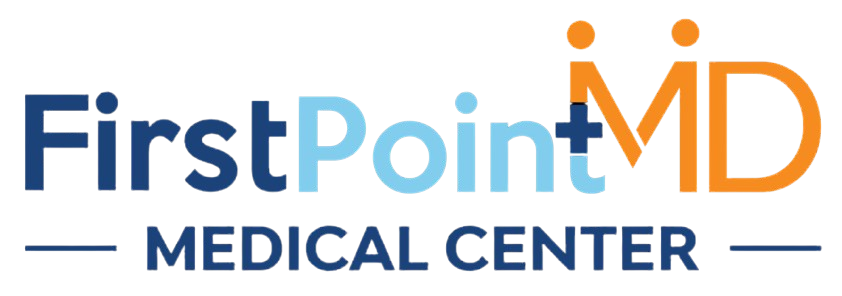At First Point MD, we stay at the forefront of respiratory medicine to offer the most advanced, evidence-based therapies to our Chronic Respiratory Diseases bearing patients. Chronic respiratory diseases such as Chronic Obstructive Pulmonary Disease (COPD) and asthma remain a major burden worldwide. While many traditional treatments are well established, recent years have brought exciting advances in biologics, novel inhaled agents, personalized therapies, and non-pharmacologic interventions. Below, we explore these developments in depth: how they work, when they are appropriate, and what patients should expect.
Understanding the Need for New Treatments
COPD and asthma are heterogeneous diseases. Patients differ in phenotypes (e.g. eosinophilic vs neutrophilic inflammation), severity, exacerbation rates, comorbidities, and response to treatment. Standard therapies—bronchodilators, inhaled corticosteroids (ICS), long-acting beta-agonists (LABA), long-acting muscarinic antagonists (LAMA)—serve many patients well, but others continue to suffer frequent exacerbations, poor quality of life, or progressive lung function decline. Recent advances aim to:
-
Target specific inflammatory pathways
-
Reduce reliance on systemic corticosteroids
-
Improve lung function and reduce exacerbations
-
Address disease phenotypes more precisely
-
Combine pharmacologic and non-pharmacologic therapies, including device or surgical options
Biologics: Targeted Immune Modulation
Dupilumab (Dupixent) for COPD
One of the recent breakthroughs is Dupilumab, a monoclonal antibody that blocks IL-4 and IL-13 signaling, targeting type-2 inflammation. It has become the first biologic drug approved for uncontrolled COPD in patients who still have exacerbations despite standard inhaled therapy. Clinical trials showed it reduces exacerbations and improves lung function and quality of life in those with elevated eosinophil counts.
Mepolizumab (Nucala) Expansion into COPD
Originally approved for severe eosinophilic asthma, mepolizumab (interleukin-5 inhibitor) has also been approved as an add-on therapy for COPD with an eosinophilic phenotype. It has demonstrated benefit in reducing moderate and severe exacerbations.
Benralizumab at Exacerbation (ABRA Study)
The ABRA trial tested a different strategy: administering benralizumab (which targets IL-5 receptor α on eosinophils) at the point of exacerbations in asthma and COPD, particularly for eosinophilic exacerbations. This study showed that a single dose of benralizumab injected during flare-ups could outperform systemic steroid tablets, reducing treatment failures and improving symptoms like cough, breathlessness, and wheeze.
Novel Inhaled Agents and Small Molecule Innovations
Ohtuvayre (Ensifentrine): Dual PDE3 / PDE4 Inhibition
In June 2024, the FDA approved Ohtuvayre (ensifentrine), the first inhaled product in more than two decades with a novel mechanism: dual inhibition of phosphodiesterase (PDE) 3 and PDE4. By combining airway dilation with anti-inflammatory effects, it improves lung function and reduces exacerbations in moderate to severe COPD.
Combination Therapies: Triple Inhalers and Fixed-Dose Combinations
Advances in fixed-dose inhaled combinations containing ICS + LABA + LAMA allow simplified regimens with better efficacy. For example, beclometasone/formoterol/glycopyrronium is one such inhaled triple-combination used in patients whose disease is not sufficiently controlled by dual therapy. These combinations improve lung function, reduce exacerbation rate, and help with adherence.
Defining Disease Phenotype & Precision Medicine
Not all asthma or COPD are the same. Recent guidelines and studies place greater emphasis on identifying phenotypes and endotypes (biological mechanisms) in order to tailor treatment.
-
Eosinophilic phenotype: Elevated eosinophil counts (blood or sputum) indicate likely benefit from biologics like mepolizumab, benralizumab, or dupilumab.
-
Type 2 inflammation: IL-4 / IL-13 signaling drives this, and blocking them (as with dupilumab) shows improvements.
-
COPD heterogeneity has been increasingly recognized; GOLD (Global Initiative for COPD) guidelines are evolving to reflect different inflammatory drivers and risk profiles.
Non-Steroid Alternatives During Acute Exacerbations
Systemic corticosteroids have been the standard for acute exacerbations of asthma and COPD, but they carry side effects (hyperglycemia, osteoporosis, etc.). New trials like ABRA suggest monoclonal antibodies (e.g. benralizumab) given during exacerbations may reduce reliance on steroids, lower risk of side effects, and improve patient outcomes.
Surgical, Interventional, and Device-Based Innovations
While pharmacologic treatments are central, interventions are evolving:
-
Bronchoscopic lung volume reduction: Minimally invasive procedures using endobronchial valves or coils to reduce hyperinflated lung portions in patients with severe emphysema, improving breathing mechanics and quality of life.
-
Bullectomy, lung volume reduction surgery, or transplant for selected patients with advanced disease. Although not new, criteria for patient selection have refined, and surgical techniques improved.
-
Home non-invasive ventilation (NIV) for stable but severe COPD with chronic respiratory failure shows growing benefit. Devices are more comfortable, adaptive, and better tolerated.
Digital Health, Monitoring, and Predictive Tools
New tools are enhancing ability to detect exacerbations early, tailor treatment, and facilitate self-management:
-
Remote monitoring: Devices that measure peak flow, spirometry-like data, oxygen saturation; mobile apps to report symptoms.
-
Algorithmic and AI-driven prediction: Machine learning models to predict exacerbations based on environmental factors, symptom trends, and biometric data. Early warning systems could reduce hospitalizations.
-
Telemedicine and virtual pulmonary rehabilitation: Enables delivery of education, exercise, and monitoring remotely – especially useful for patients with mobility or access issues.
Current Challenges and Considerations
While these advances are promising, some challenges remain:
-
Cost and accessibility of biologic therapies and monoclonal antibodies. Insurance coverage, patient eligibility based on biomarkers (e.g. eosinophil count) limit use.
-
Risks and side effects: Though targeted, biologics can have adverse effects or may not work in all phenotypes; long-term safety data is still maturing.
-
Identifying who benefits most: Accurate phenotyping (blood tests, sputum analysis) is resource-intensive; not all clinics have that capacity.
-
Adherence and inhaler technique: Even with perfect drugs, if inhaler technique is poor or adherence low, outcomes suffer. New inhalers or devices try to help but patient training remains critical.
-
Global disparities: Many innovations are first available in high-income settings; in low- and middle-income countries access is limited.
What Patients Should Expect Now at First Point MD
At First Point MD, our protocols are evolving to incorporate these latest advances. Patients with asthma or COPD can expect:
-
Comprehensive evaluation, including phenotype assessment (e.g. eosinophil blood count, sputum tests where feasible)
-
Access to biologic therapies when criteria are met (frequent exacerbations, type-2 inflammation, poor control despite inhaler therapy)
-
Updated inhaler regimens, possibly using newer inhaled agents like dual PDE inhibitors or triple combinations to simplify dosing and improve efficacy
-
Proactive care during exacerbations, considering alternatives to systemic steroids (e.g. biologic injections in specific flare-ups) when safe and indicated
-
Support for lifestyle and non-pharmacologic therapies, including pulmonary rehab, smoking cessation, oxygen therapy, and surgical interventions when appropriate
-
Use of digital monitoring and telehealth to track symptoms, detect worsening earlier, reduce hospitalizations, and maintain continuity of care especially when in-person visits are difficult
Where the Field Is Headed: Future Directions
-
New Biologics & Beyond Eosinophils: There are ongoing studies of antibodies targeting other inflammatory mediators beyond IL-5, IL-4, IL-13 (e.g. upstream signaling like ST2/IL-33), which may benefit patients who currently do not respond to existing biologics. Astegolimab is one investigational agent under study.
-
Regenerative Medicine: Research into lung tissue repair/regeneration (stem cells, growth factors) is early but has potential for altering disease progression in COPD.
-
Precision Medicine: Genetic and molecular diagnostics to stratify patients not just by clinical symptoms but by biomarkers, transcriptomics, etc.
-
Novel Drug Delivery Systems: Inhalers with improved particle engineering, smart inhalers that record dose usage, adaptive delivery.
-
Environmental and Preventive Strategies: Vaccines, pollution control, early childhood interventions to reduce risk.
Summary
Recent advances in treating COPD and asthma are changing the landscape of care. Biologics like dupilumab, mepolizumab, benralizumab are now being used in COPD in addition to asthma, especially for eosinophilic phenotypes; novel inhaled agents like ensifentrine (Ohtuvayre) bring fresh mechanisms of action; new combination inhalers simplify regimens and improve outcomes; and for exacerbations, treatments like benralizumab injected at flare-ups may offer steroid‐sparing options. Non-pharmacologic and monitoring innovations are complementing drug therapies.
At First Point MD, we aim to bring these advances to our patients responsibly—identifying those who will benefit most, ensuring safety, managing costs, and combining medical, device, and digital tools to improve breathing, reduce symptoms and exacerbations, and support long-term lung function.


